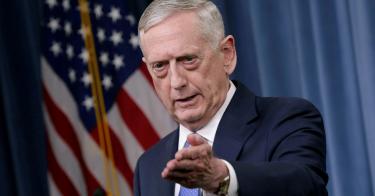The John S. McCain National Defense Authorization Act (NDAA) for Fiscal Year 2019, which is the reconciliation of earlier House and Senate versions, is good news for the military.
It grants the Defense Department and the military services some significant new authorities to assist in rebuilding the armed forces. Additionally, on several issues, Congress wisely chose to take a more measured approach requiring analytical reports on proposed directive action to ensure more informed decision process prior to congressionally-mandated Defense Department policy and organizational changes.
In this article we examine some of the key policy changes, and in a further piece we will look at other aspects of this critical legislation. Some of the key issues addressed in the new version of the NDAA legislation include:
Roles and Missions – Congress has required the Secretary of Defense to re-evaluate the highest priority roles and missions of the Defense Department under the new National Defense Strategy and to optimize the effectiveness of the joint force. These extensive reporting requirements are thougtful and will provide the in-depth analysis needed to best align resources to develop a joint force that is best prepared for strategic competition and America’s national security priorities.
Pay – Authorizes a pay raise of 2.6 percent for member of the Armed Forces, matching the Bureau of Labor Statistics’ estimated Employment Cost Index increase. This pay raise is necessary to enable the U.S. military to continue to attract qualified talent in the face of toughening labor competition and growing military end strength. With only 29 percent of Americans between the ages of 19-24 meeting the qualifications for military service and record low unemployment (3.8 percent in May 2018), military recruiters are facing intense competition for talented and willing young people to serve.
Size of the Military – Fully supports Defense Department ’s request to re-grow the active-duty military man power by 24,100 in 2019, helping to regrow the military after years of budget-driven personnel cuts and provide the larger military force essential for the National Defense Strategy’s focus on great power competition.
Surface Warfare Safety and Readiness – The NDAA includes numerous congressionally-mandated numerous reforms intended to improve U.S. Navy surface ship operations safety and readiness from the Surface Warfare Enhancement Act of 2018, which was sponsored by Sens. John McCain, R-Ariz, and Roger Wicker, R-Miss.. The majority of these reforms support findings and recommendations from the Navy’s own comprehensive readiness reviews. Thankfully, Congress has tasked the Government Accountability Office to study surface warfare career paths instead of the proposed mandate establishing two separate surface warfare officer career paths.
Modernizing Officer Personnel Management – Congress has provided the service secretaries with the option to employ a number of new authorities that update the military officer management laws to better meet the needs of the modern military and retain outstanding talent. Among these changes are prioritizing high-performance over seniority for promotion, allowing multiple opportunities for promotion, and providing the ability to bring in officers at a higher rank for special skills and circumstances.
Foreign Investment Reform – While it is a shame that the Committee on Foreign Investment in the U.S. (CFIUS) and export control reforms were included in the 2019 NDAA, it does provide CFIUS greater authority to review some non-passive investments in critical infrastructure, investments that may harm sensitive personal data, and other transaction types that may circumvent a national security review. In addition, the inclusion of specific CFIUS funding will address its resource problems.
ZTE and Cybersecurity Risks – The bill prohibits the federal government from purchasing or extending contracts with any entity that uses telecommunications equipment, systems, or services produced by the Chinese companies ZTE or Huawei Technologies. These restrictions are reasonable and welcome since these companies were identified as threats to U.S. supply chain security and they only prohibit federal government procurement.
The House overwhelming approved the Fiscal Year 2019 NDAA by a vote of 359-54 on July 26. The Senate vote is expected later in August.
While the Fiscal Year 2019 NDAA provides much needed funding and new authorities to help the Defense Department rebuild the nation’s military, unless Congress can avoid another months-long continuing resolution in 2019 and avoid a return of the Budget Control Act limits in Fiscal Year 2020, the gains made over the past two years will quickly be halted or even reversed.
This piece originally appeared in The Daily Signal



